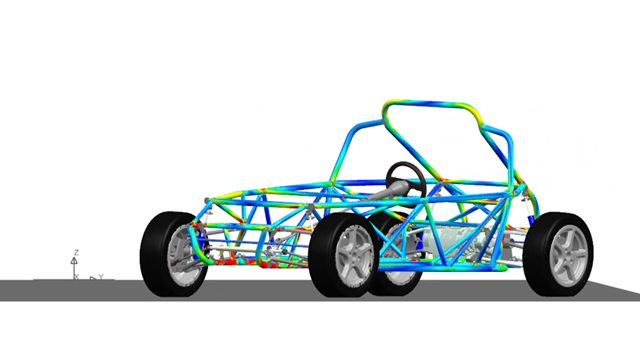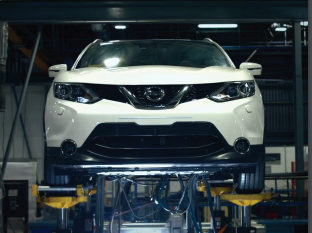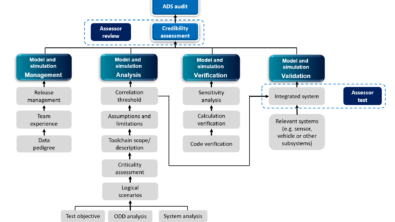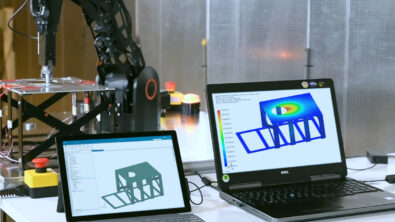5 reasons why superior vehicle durability matters

Vehicle durability is still as important today as it was yesterday. Understand why it still matters in 2022 and learn about the latest technologies that help you meet strength and durability targets.
We witness a lot of exciting trends developing in the automotive world. Vehicle electrification, autonomous driving, and digitalization – those trends impact and reshape the industry landscape. Sometimes, it feels as if the traditional engineering disciplines would become obsolete. Or as if they would not be so important anymore, as they stand in the shadow of shiny new technologies.
But new technologies do not replace traditional engineering disciplines. In some cases, they enhance them. Or, they rely on them to help design and develop better products. Vehicle durability engineering is still as much needed when developing modern cars as it was 10 or 20 years ago.
The discipline has evolved over time to embrace the digitalization trend. It also implements technologies and methodologies that leverage artificial intelligence. It improves the established processes by delivering more accurate insights, faster and earlier in the design cycle. Lastly, it addresses new challenges related to the electrification trend.
Here are 5 reasons why you should care about vehicle durability in 2020.
#1 – For consumers, good equals reliable, and vehicle durability counts.
How would you define a “good” car? The one that boasts a cool design? The one that implements the latest and greatest technology? If you ask Google, the answer is straightforward: a good car is a reliable one. I typed a number of query variants in the well-known search engine. I wanted to find out which were the “best cars” or the “top 10 vehicles”. The search consistently returned results that listed the “10 most reliable cars” or the “most durable cars”.
The semantic shift, from “good” to “reliable” or “durable” when the adjective qualifies a car, is not coincidental. The search bots from Google are trained to identify the search intent of users. The bots return those lists as they understood that you meant to search for the most reliable car.
Year after year, independent companies, consumer groups, and the specialized press publish their ranking and reviews of the top cars of the year. Consumer Reports in the US, JD Power, Motorway in the UK, Autokauf in Germany are just a few examples of the many companies, websites, or magazines that judge the value of a car based on the frequency of breakdowns or incidents. Their sources and methodologies may differ but the opinions they express, and the outcome of their investigations, greatly influence consumers and car buyers.
The reported reliability incidents range from component failure due to fatigue to faulty electro-mechanical parts. In a case study, we reported how Nissan relies on the Simcenter end-to-end solution for test-based vehicle durability engineering to maintain high-quality standards and enhance its brand value.

“We test more and more electronic components and less mechanical parts. The collaboration with Siemens is essential to adapt to these changes and to validate these new components.”
Arturo Barreu, Powertrain Durability Test Engineer Function and Durability Department NTCE-S
# 2 – Hybrid and electric vehicles are now also ranked on their durability/reliability scores.
New vehicle types are no longer designed for the early adopters who will be forgiving on defects and repairs. As those vehicles become mainstream products, it is essential that they meet consumers’ expectations in terms of reliability. Yet, the durability engineering of hybrid and electric vehicles poses some new challenges. Those include dealing with battery durability, conflicting performance requirements, and generalized usage of lightweight materials.
Manufacturers need to assess whether using lighter components, which will help increase the driving range, will not damage the durability performance of the car. And they must deal with the battery weight, which modifies the load distribution on the vehicle. Simcenter solutions are here to help strike the right balance between strength and durability on the one hand, and material cost and weight on the other.

# 3 – Weight loss is a trend that applies to all types of cars and impacts vehicle durability performance.
Whether to increase the driving range or to reduce fuel consumption, lightweight design and materials are essential to meet targets. However, they should not come at the expense of long-lasting parts and components. The Simcenter finite element-based solving capabilities for composites, together with a new durability solver approach, allow you to correctly analyze the influence of progressive damage. You can develop a damage-tolerant, lightweight design that performs well under multiple loads with variable amplitudes. This proven approach applies to short and endless fiber re-enforced plastics as well as to adhesive structures.

# 4 – The global market for used-cars remains strong.
The global used car market is poised to grow by 34.53 million units during 2020-2024, progressing at a CAGR of 6% during the forecast period, according to a recently published report. We live in an era of consumerism, but cars are still items that will easily find a second, third, or even fourth owner. Cars are nowadays engineered to drive at least 200.000 kilometers, while some makes and models aim at an even higher number.
# 5 – Modern durability engineering techniques are more efficient than ever.
They leverage AI techniques to advance fatigue prediction. A holistic approach to vehicle durability engineering combines simulation and tests to help develop better vehicles. The digital twin, fed with real load data, supports durability engineers in their quest towards meeting targets, without compromise, while taking into account other performance attributes.
From road load data acquisition, load data mining, design optimization, and virtual product validation to quantifying the remaining useful lifetime, Simcenter solutions help in dealing with balancing issues faster, cheaper, and earlier on. The solutions guide you to find the right answers for engineering lighter, stronger, and more durable vehicles in all the design stages.
If you are interested in learning more, register for our free webinars on Simcenter strength and durability engineering solutions.


